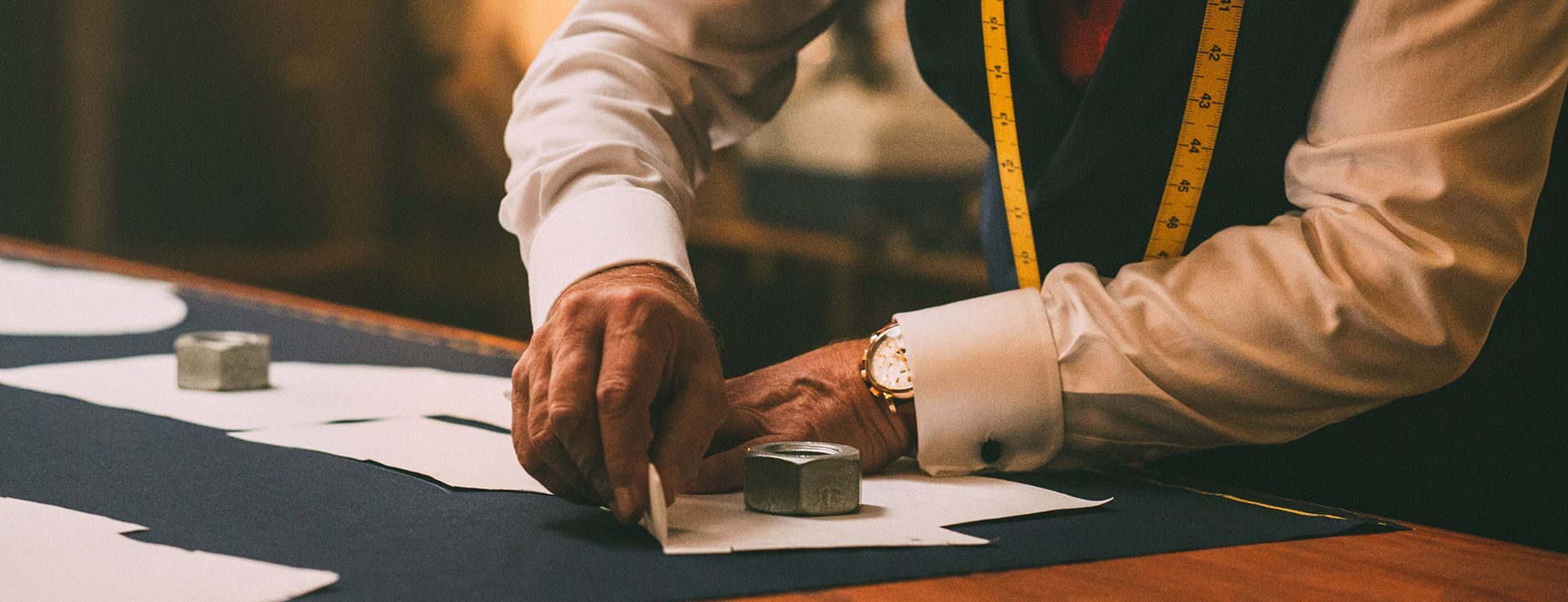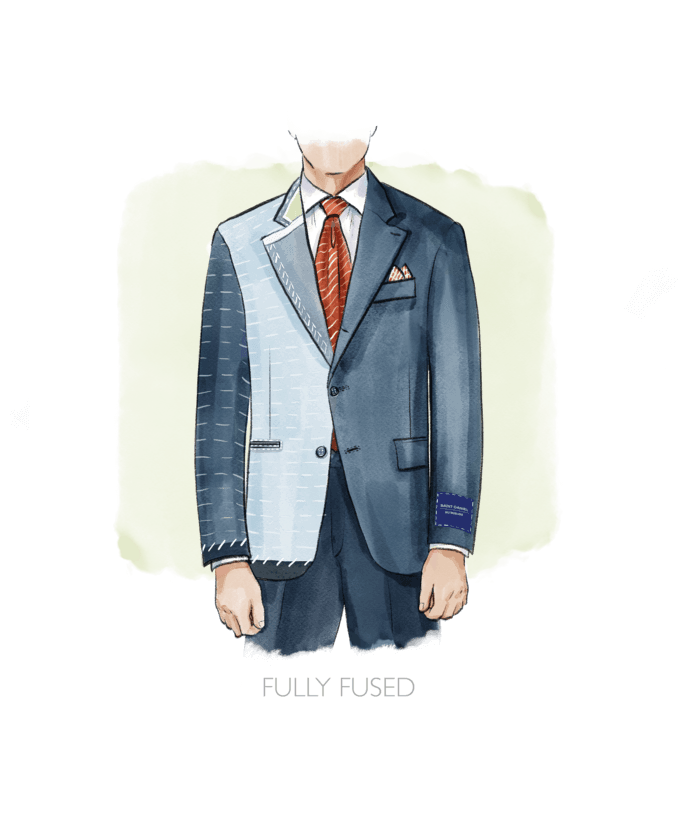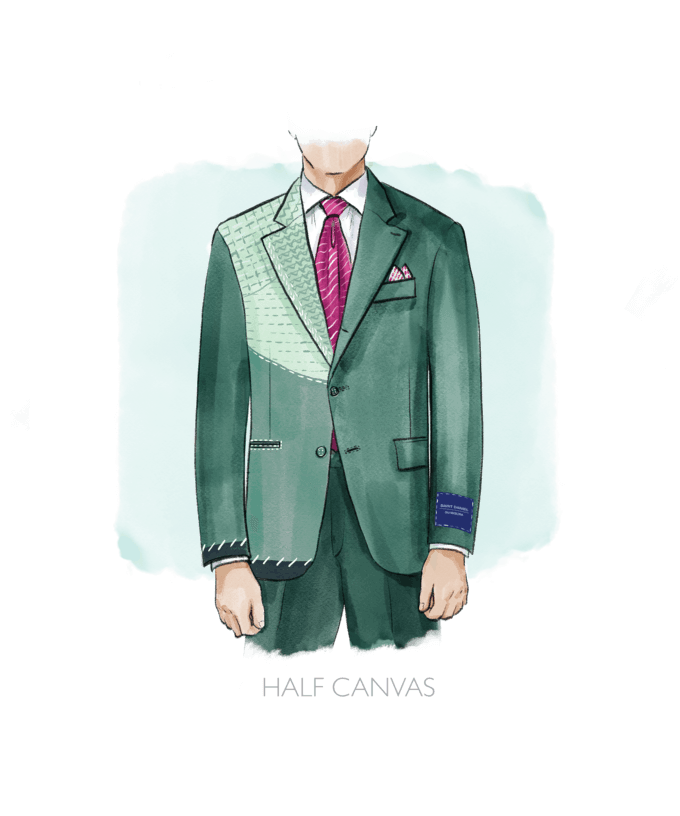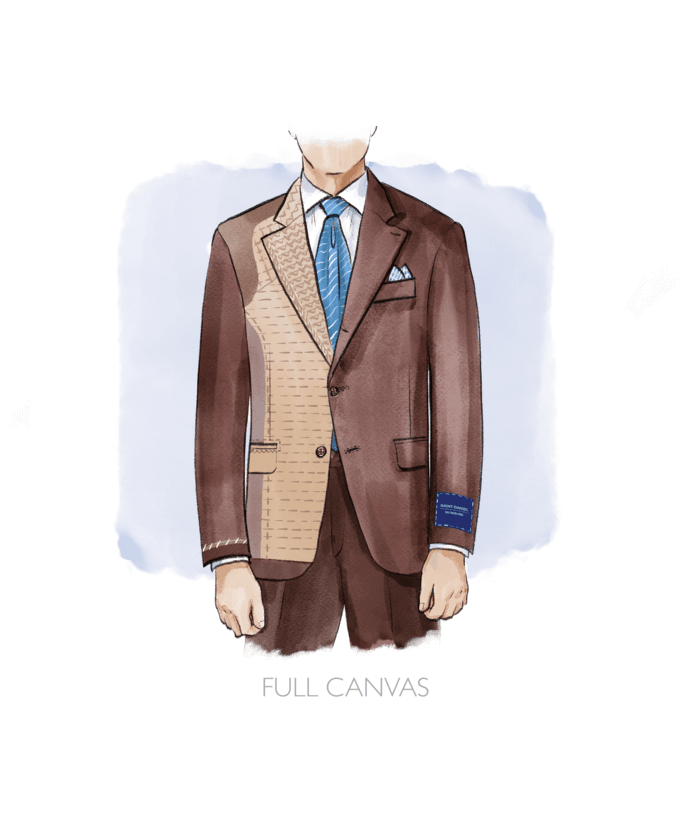
Jacket Construction
Every detail telling your story
A well-crafted jacket is a pleasure to behold, but the details that define its elegance can be subtle. One key factor is the interlining, which shapes the jacket and affects its durability.
Interlining is a layer of cloth between the outer fabric and lining, providing structure to areas like the chest, lapels, and shoulders. The difference lies in construction: fused jackets use adhesive, while half- and full-canvas jackets have hand-stitched layers that mold to the body over time.
Traditionally, blazers were half-canvas and suits full-canvas, but we now offer full-canvas options for all jackets, requiring over 8,000 stitches for superior drape and flexibility. As we refine our craftsmanship, enhancing hand-finished details is the natural next step. With illustrations from Alevtyna C, we break down these distinctions further.
Fully Fused Jacket
In the 1950s, ready-to-wear suits became widespread, with manufacturers standardizing cuts to fit the average man. Today, most suits are off-the-rack.
Fused jackets, commonly found in stores, use a synthetic adhesive applied under heat to bond the lining to the fabric. This makes them more affordable and immediately available without fittings. However, fused construction sacrifices flexibility—over time, glued lapels may lift, and the jacket can feel stiff and less adaptable.

Half Canvas Jacket
While 'canvas' suggests quality, half-canvas suits often have fused lower sections and lapels. Ideally, half-canvassed construction includes some handpicked elements, offering a softer feel than fully fused jackets.
Designed to shape naturally over the chest and shoulders, half-canvas construction enhances comfort and flexibility. It allows for better movement and a natural drape without stiffness, making it a solid mid-range option.

Fully Canvas Jacket
Canvas is made from horsehair, wool, mohair, or camel hair, sometimes blended for varying thickness and weight. In a full-canvas jacket, the canvas is hand-stitched between the inner and outer layers, allowing flexibility and a natural drape. Unlike fused or half-canvas jackets, full-canvas construction requires extensive stitchwork, making it less common.
The best jackets stand out through craftsmanship, with hand-sewn details like buttonholes and interlining. Over time, the structure molds to the body, ensuring a personalized fit, superior drape, and lasting quality.

